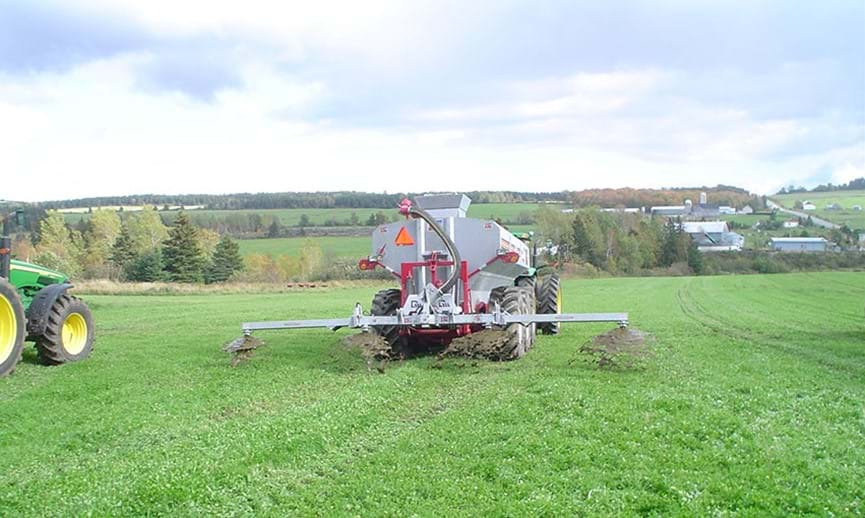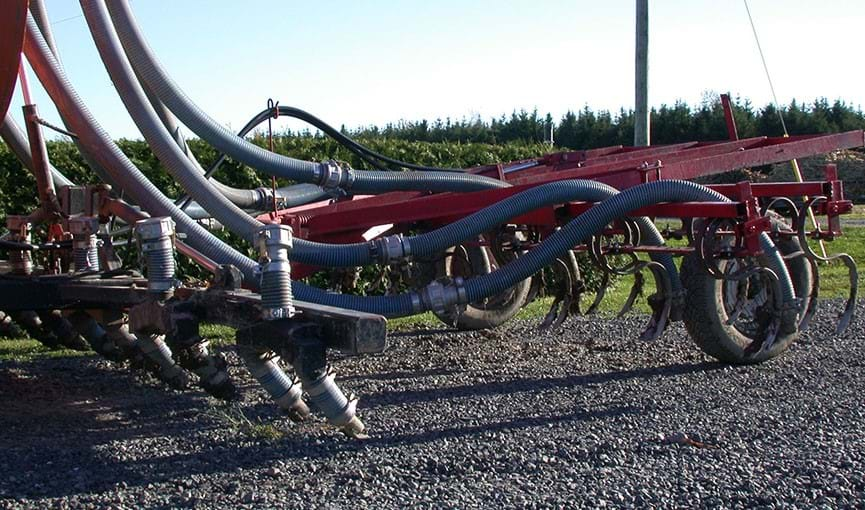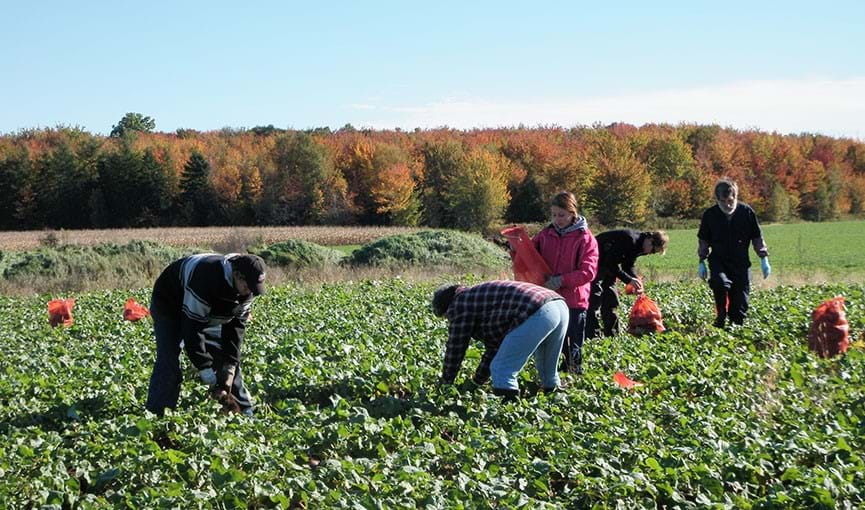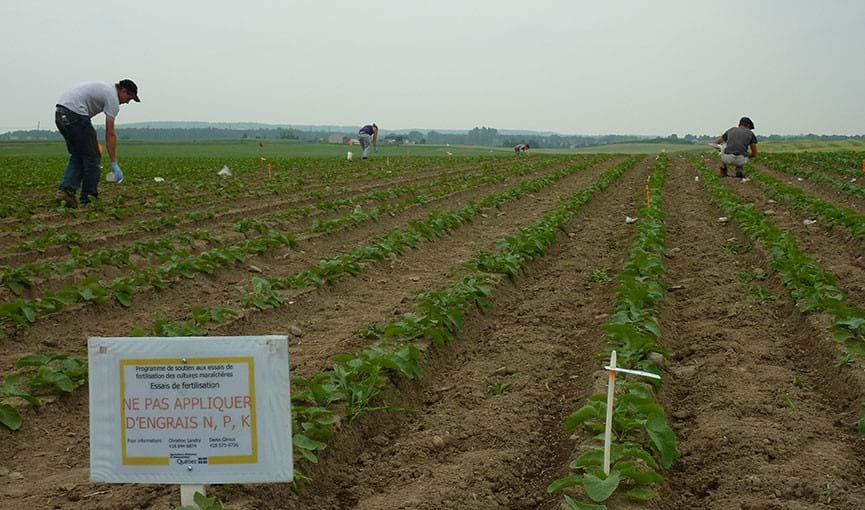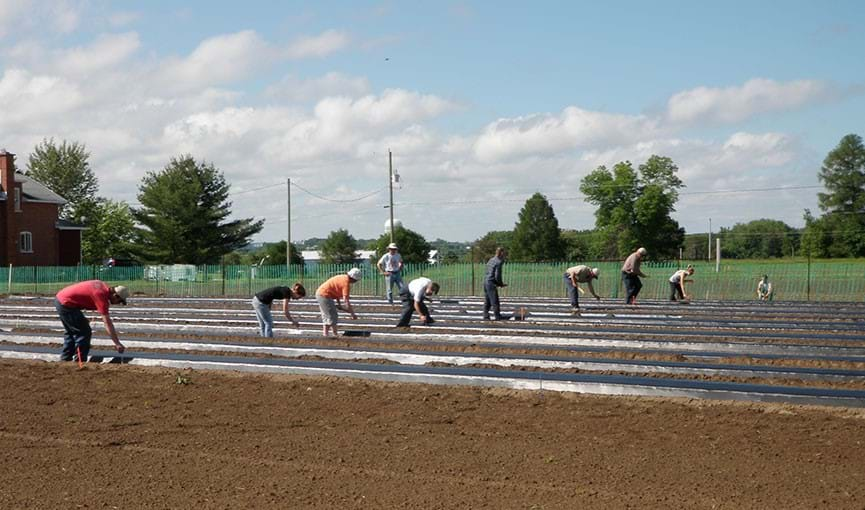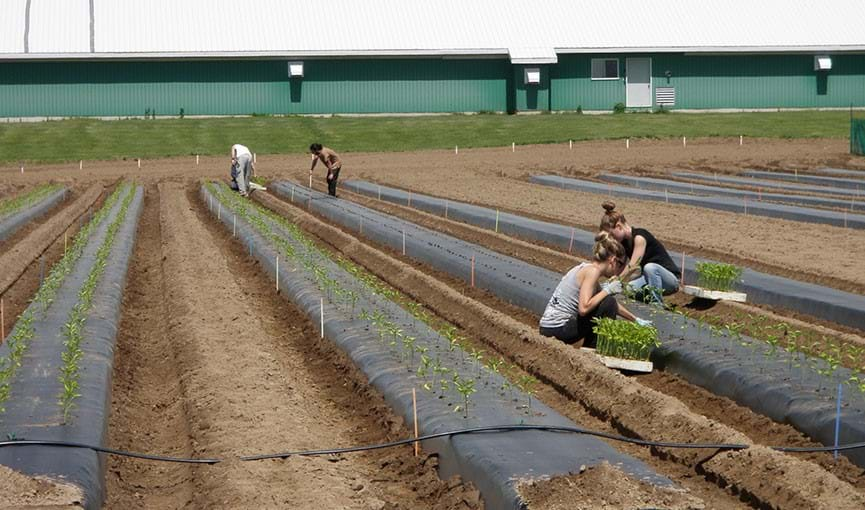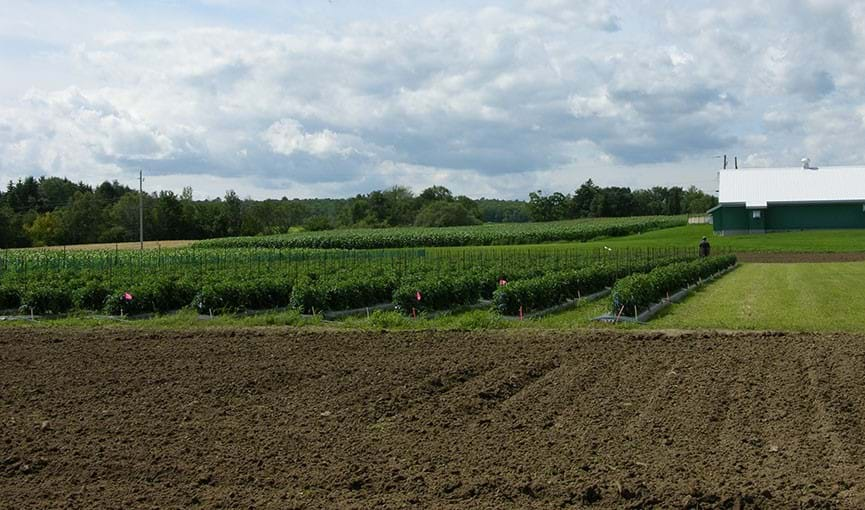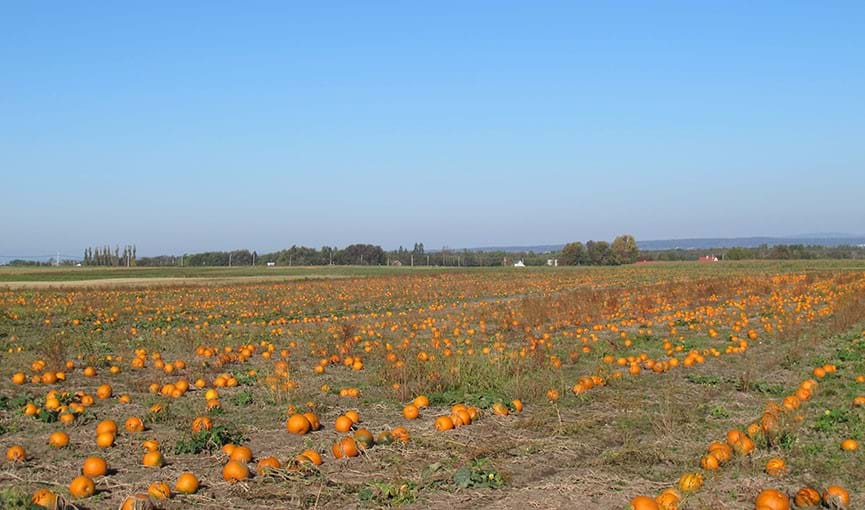Fertilizer management
Green manures, rotations, organic and mineral fertilizers
IRDA helps farmers make the most of healthy soil by developing new crop management practices that incorporate green manures and rotations, and by optimizing the use of organic and mineral fertilizers. Our experts also perform tests to determine nitrogen, phosphorus, and potassium efficiency coefficients for various organic substances and weigh in on the benefits of different biostimulants. Furthermore, they work to develop indicators to determine a soil’s fertilization requirements from any given sample. IRDA is currently heading up a major project to revise 61 fertilization charts for Ministère de l’Agriculture, des Pêcheries et de l’Alimentation du Québec that have, for decades, served agronomists and farmers as benchmarks for preparing agri-environmental fertilization plans.
Fertilization and good water management go hand-in-hand
IRDA irrigation experts are engaged in a number of fertilization and fertigation projects aimed at maximizing nutrient use by plants. Since water supply plays a major role in how plants respond to fertilizer doses, our research team systematically evaluates a number of factors—such as water availability, temperature, and root distribution in the soil—when devising fertilization strategies.
Québec farmers who implement IRDA’s recommendations achieve stable or higher crop yields, reductions in production costs, and improvements in the quality of their most valuable asset, the soil.
IRDA helps farmers select the best fertilizer and spreading techniques for achieving optimal yields.




